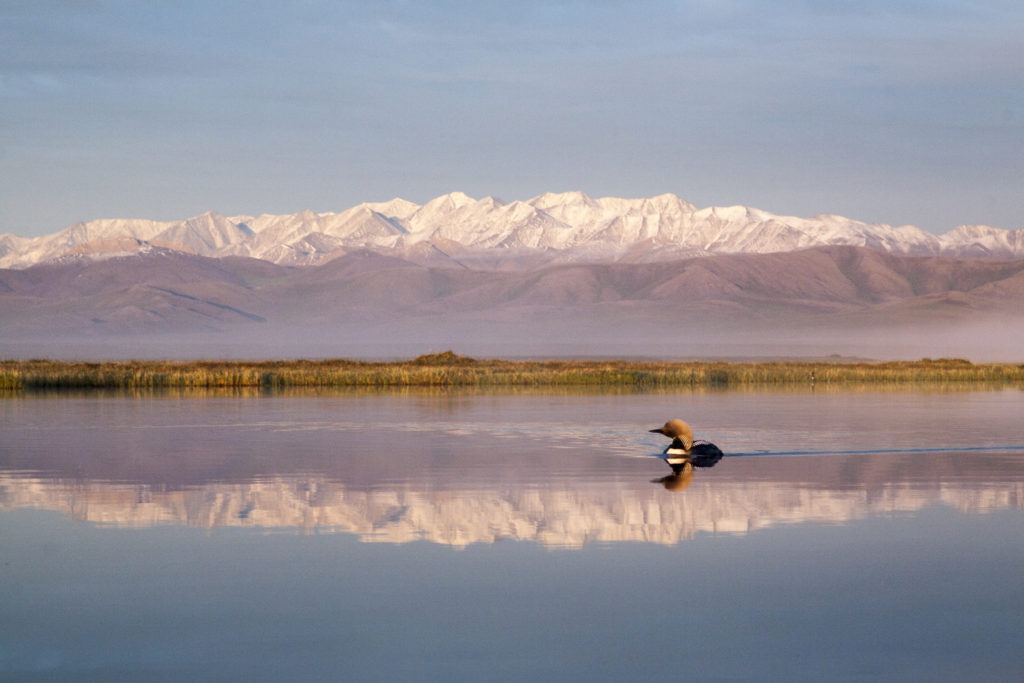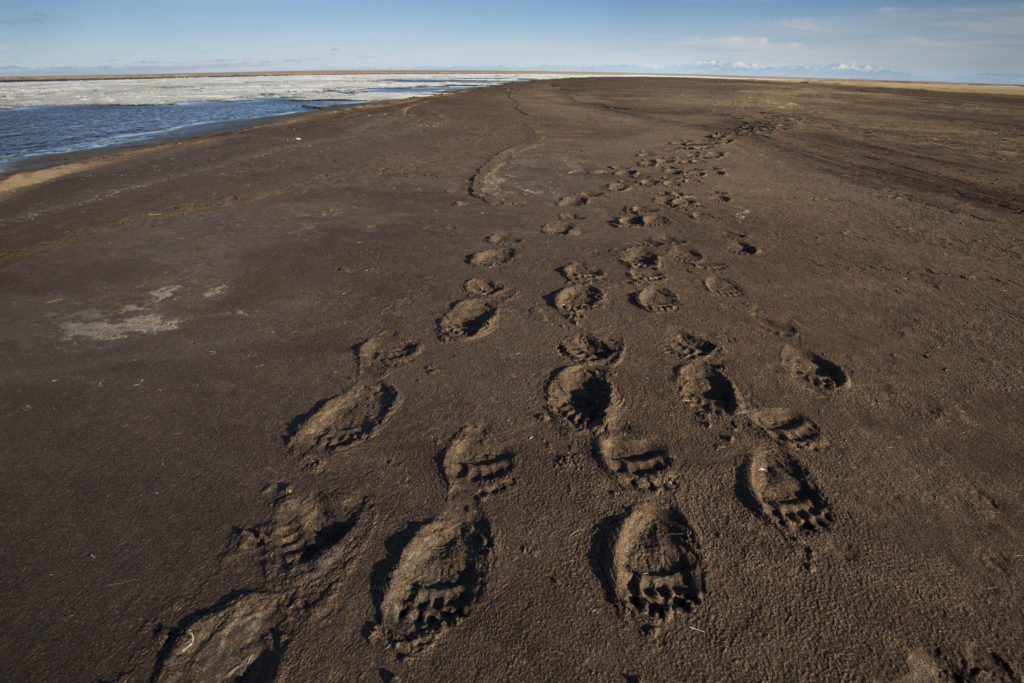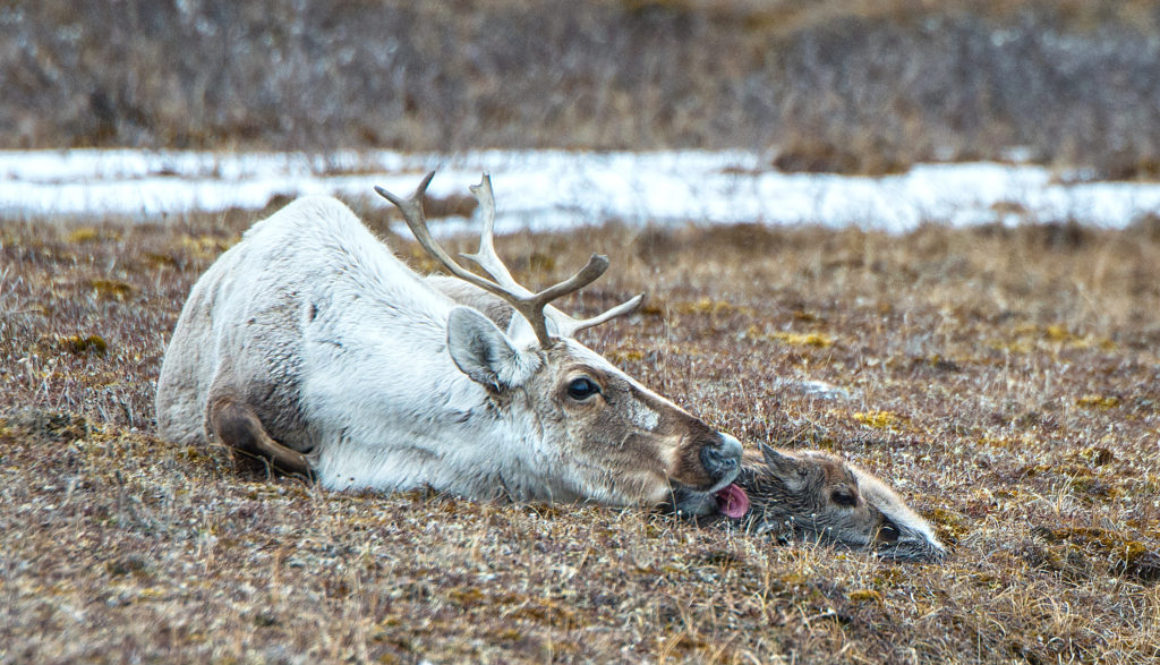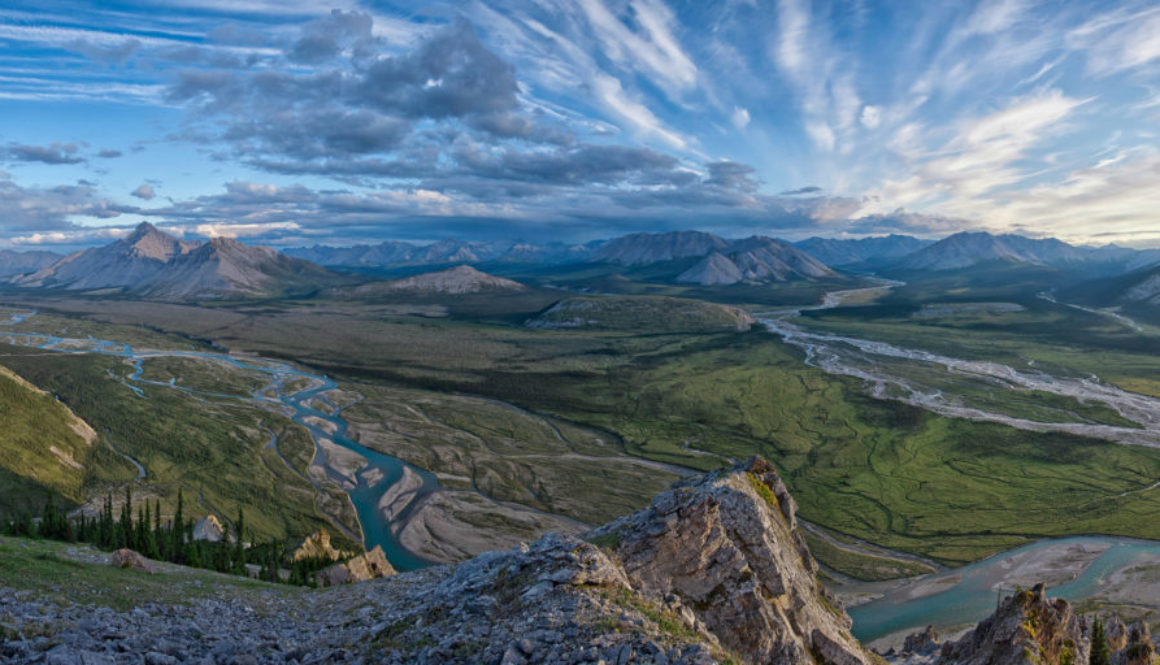A History of Collaboration and its Role in Protecting the Arctic Refuge
Header Image: Porcupine caribou, Peter Mather
Written by: Braden Lamoureux, Conservation and Events Intern
For over 30 years, efforts by the Gwich’in Steering Committee, conservation groups, and the public have been preventing the Arctic Refuge from drilling. This past March, hundreds of Aboriginal Peoples, Yukoners, and First Nation, Territorial and Federal Government came together and wrote comments to protect the Arctic National Wildlife Refuge and the calving grounds of the Porcupine caribou herd. Oil and gas extraction in the Arctic Refuge could have devastating impacts on the species and ecosystems within it. We are awaiting the release of the ‘Final Environmental Impact Statement’ (Final EIS) which the U.S. Bureau of Land Management (BLM) is planning to deliver in August or September. It’s nearly impossible to address all of the issues raised in the scoping and commenting periods in such a short time. A hard look at the evidence should take many years of research and the BLM has time and time again cut corners.
Canada and the U.S. have worked in partnership to conserve key wilderness areas for over 70 years. Through legislation and agreements (old and new), the two countries have emphasized their partnership in the decision making process for conserved lands. We have hope that this partnership will play a large role in keeping oil and gas drilling out of the Arctic Refuge. Comments submitted by experts and lawyers highlighted how the Draft EIS fails to comply with current laws. If the Final EIS still falls short, it is inevitable that this issue will end up in court.

Here’s a summary of the legislation and agreements that we found particularly important:
The National Environmental Policy Act of 1970 (NEPA)
NEPA is the cornerstone of environmental protection in the United States. NEPA states that any major federal project must include an Environmental Impact Statement (EIS). Since the project will have potentially significant impacts, this statement must make informed decisions from research and public involvement.
The Draft EIS to lease the Arctic Refuge falls short of multiple NEPA requirements such as considering long-term environmental effects, impact reduction efforts, project alternatives, and the livelihood of residents. Over one-million people voiced their support for protecting the Arctic Refuge in the commenting period of the Draft EIS this past December.
The Alaska National Interest Land Conservation Act of 1980 (ANILCA)
This act recognizes the importance of collaboration between the U.S. and Canada in evaluating the impacts of oil and gas development in Alaska. It also re-iterates the purpose for which the Arctic Refuge was created such as conservation of wildlife populations and habitat, fulfillment of treaty obligations for migratory wildlife, and the continuation of subsistence uses.
The Porcupine Caribou Herd Conservation Agreement of 1987 (PCHCA)
This agreement between Canada and the U.S. aims to ensure international cooperation and coordination on the conservation of the Porcupine Caribou herd and it’s transboundary habitat. It also enables users of the Porcupine Caribou herd to be involved in international conservation effort through initiatives like the Porcupine Caribou Management Board.
Multiple species protection acts
The Draft EIS does a poor job of addressing how it will comply with the Endangered Species Act of 1973 (ESA), the Migratory Bird Treaty Act of 1918 (MBTA), the Marine Mammal Protection Act of 1972 (MMPA), the 1973 Agreement on the Conservation of Polar Bears, and National Wildlife Refuge mandates.
Inconsistencies with the Tax Act
The Draft EIS is unclear on how the Bureau of Land Management (BLM) will administer and manage the oil and gas leasing program, how much actual land will be impacted in total, and how it will implement the components of oil and gas development across the landscape; such as roads and pipelines. The BLM gave short notice for public hearings that occurred in the U.S. and failed to provide public engagement opportunities for numerous regions across Canada as requested by the Vuntut Gwitchin, the Government of Yukon, and the Government of Northwest Territories.
A long history of Arctic Refuge protection
The U.S. and Canada created the Arctic National Wildlife Refuge in 1960 and they share a long history of collaboration on cross-border conservation priorities. Since the Yukon and Alaska are impacted by developments within each other’s respective territories, consultation is extremely critical as well as addressing the strong history of public support for protecting the Arctic refuge.
New U.S. Bill – Arctic Cultural and Coastal Plain Protection Act
On May 1, 2019 the U.S. House Committee on Natural Resources approved a new bill presented by over 100 lawmakers that would prohibit the BLM from leasing to oil and gas extraction companies in the Arctic refuge. The bill is headed to the House of Representatives next, and if passed, will face a tough battle in the Senate.

Braden Lamoureux is an environmental science student from Halifax, NS and is joining CPAWS Yukon for the summer as the Conservation and Events Intern. Stay tuned for more updates on his research about the transboundary conservation issues in the Arctic Refuge. Click here to learn more about Braden


